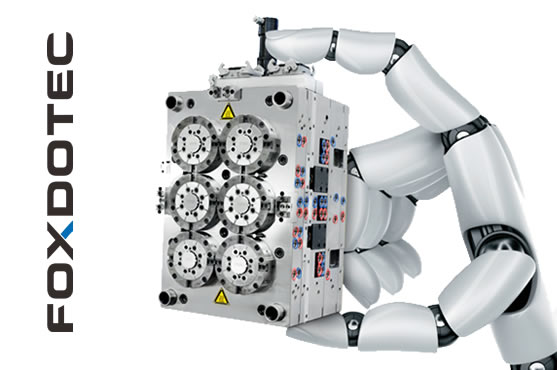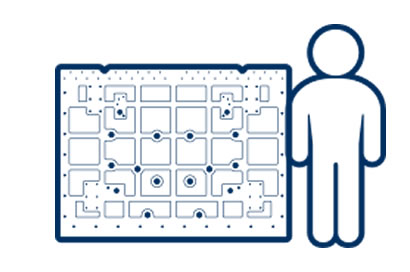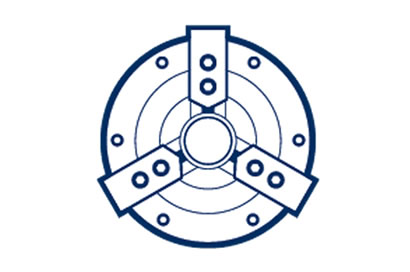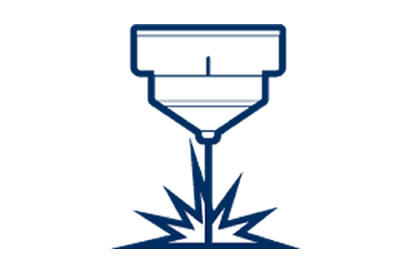Injection Systems
Revolutionize your molding process with our cutting-edge Injection Systems! Engineered for precision and reliability, our systems deliver seamless injection molding solutions tailored to your exact needs. Say goodbye to inefficiencies and hello to enhanced productivity. Experience the next level of molding excellence with our innovative Injection Systems!
Injection
What is Injection in Injection Molding?
Injection in injection molding refers to the process of injecting molten material, typically plastic, into a mold cavity to produce a desired part or product. This process is a fundamental step in injection molding, which is a widely used manufacturing method for producing plastic components with high precision and efficiency.
The injection process involves several key steps:
- Melting the Material: Plastic pellets or granules are heated until they reach a molten state suitable for injection.
- Injection: The molten material is injected into the mold cavity under high pressure, filling the cavity and taking the shape of the mold.
- Cooling: Once the mold cavity is filled, the material is allowed to cool and solidify within the mold, taking on the desired shape.
- Ejection: After the material has solidified, the mold opens, and the newly formed part is ejected from the mold cavity.
The injection process is highly precise and repeatable, allowing for the production of complex parts with tight tolerances. It is widely used in various industries for manufacturing a wide range of products, from small components to large automotive parts.
Precision Injection Mold


What is the technical features of Injection Process?
Injection Process Technical Features
The injection molding process is a widely used manufacturing method for producing plastic components with high precision and efficiency. Below are the technical features of this process:
- Material Versatility: Injection molding supports a wide range of materials, including thermoplastics, thermosets, and elastomers, providing versatility in product design and application.
- High Precision: Injection molding offers high precision and repeatability, allowing for the production of complex parts with tight tolerances and intricate details.
- Efficiency: The process is highly efficient, with fast cycle times and high production rates, making it suitable for mass production of parts.
- Reduced Material Waste: Injection molding generates minimal material waste compared to other manufacturing processes, as excess material can often be recycled and reused.
- Design Flexibility: Injection molds can be designed to produce parts with complex geometries, including undercuts, internal features, and overmolding, offering design flexibility and innovation.
- Automation: Injection molding can be fully automated, from material feeding and injection to part ejection, resulting in consistent quality and productivity.
- Surface Finish: Injection molded parts can achieve various surface finishes, ranging from smooth to textured, to meet specific aesthetic and functional requirements.
- Tooling Costs: While initial tooling costs for injection molds can be high, the per-part cost decreases with high-volume production, making it cost-effective for large quantities.
The injection molding process plays a vital role in various industries, including automotive, electronics, medical, consumer goods, and packaging, enabling the production of a wide range of products.

CNC Machining
CNC machining is a computer-controlled manufacturing process that utilizes pre-programmed software to dictate the movement of machinery and tools. This technology enables the precise cutting, drilling, and shaping of materials such as metal, plastic, and wood to create intricate components with high accuracy and consistency.
Read More
Precision Grinding
Precision grinding is a manufacturing process that involves the removal of material using abrasives to achieve extremely tight tolerances and surface finishes. used to produce components with intricate shapes, precise dimensions, and smooth surfaces. Precision grinding techniques include cylindrical grinding, surface grinding, and internal grinding.
Read More
Electrical Discharge Machining
Electrical Discharge Machining (EDM) is a non-traditional machining process that utilizes electrical discharges to erode material from a workpiece. It is particularly useful for machining complex shapes and hardened materials that are difficult to machine with conventional methods. EDM can achieve high precision and surface quality.
Read MorePrecision machining and manufacturing involve the use of advanced techniques and equipment to produce highly accurate and intricate components with tight tolerances. It requires expertise in machining processes, material properties, and quality control methods to ensure the production of high-quality parts for various industries.
Key Aspects of Understanding Injection Molds
- Design Principles: Understand the principles of injection mold design, including considerations for part geometry, material flow, cooling, and ejection.
- Materials and Construction: Explore the materials commonly used in injection mold construction, such as tool steel, aluminum, and beryllium copper.
- Manufacturing Techniques: Gain insights into the manufacturing processes used to produce injection molds, including machining, EDM, and CNC milling.
- Mold Maintenance and Repair: Learn about the importance of mold maintenance and preventive maintenance schedules to ensure the longevity and performance of injection molds.
- Tooling Standards and Regulations: Familiarize yourself with industry standards and regulations related to injection mold design and manufacturing.
- Advanced Technologies: Stay informed about advancements in injection mold technology, such as rapid prototyping, additive manufacturing (3D printing), and simulation software.
- Cost Considerations: Gain insights into the cost factors associated with injection mold production and learn about strategies for cost optimization.
- Case Studies and Best Practices: Study real-world examples of successful injection mold projects across various industries.
Key Aspects of Understanding Precision Machining
- Processes and Techniques: Explore the various precision machining processes and techniques, including turning, milling, drilling, grinding, electrical discharge machining (EDM), and others.
- Materials: Learn about the different types of materials commonly machined using precision techniques, such as metals (e.g., aluminum, steel, titanium), plastics, ceramics, and composites.
- Tooling and Equipment: Familiarize yourself with the cutting tools, machine tools, and equipment used in precision machining.
- Tolerances and Metrology: Gain insights into tolerance requirements and metrology techniques used to measure and verify part dimensions and surface characteristics.
- Design for Manufacturing (DFM): Explore principles of design for manufacturability (DFM) and how they apply to precision machining.
- Quality Assurance: Understand quality control measures and inspection techniques used in precision machining.
- Applications and Industries: Explore the diverse applications of precision machining across industries such as aerospace, automotive, medical, electronics, and tooling.
- Advanced Technologies: Stay informed about advancements in precision machining technology, including automation, robotics, additive manufacturing (3D printing), and advanced materials.
Precision machining and mold technical documents
Other Downloads
- Technical Parameter 3.9 MB
- Technical Drawing 1.8 MB
